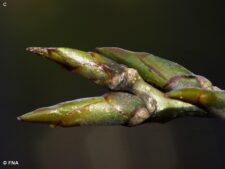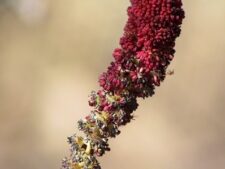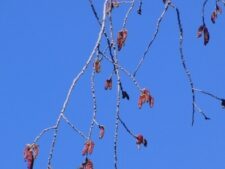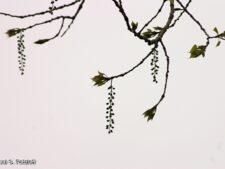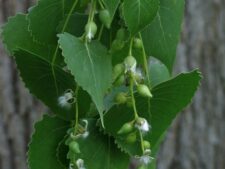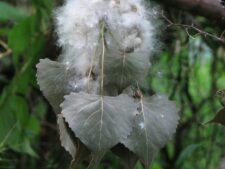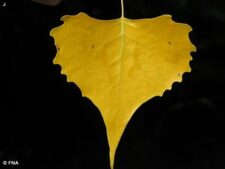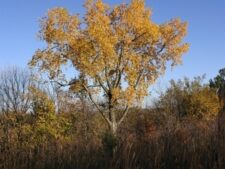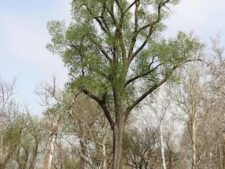
This massive native tree reaches heights of 150 feet and diameters of more than 6 feet. The bark of mature trees is gray and deeply furrowed (B). Dying trees often shed their thick bark, leaving behind tall, bare trunks. The winter twigs, often found on the ground after a storm, have sticky buds (C,D). Male and female flowers are on separate trees; they appear before the leaves. Both are borne on catkins, but the female flowers are rarely seen from the ground. The reddish male catkins may be seen high in the tree or on the ground (D,E,F). The leaves are triangular, sometimes wider than long (A). They turn a bright yellow in the fall (J,K). The seed capsules, appear in drooping clusters, split into 2-4 parts to release vast numbers of small seeds attached to tufts of cottony hairs (G,H,I). They cover just about everything on the floodplains by June.
This tree grows mostly on the floodplains, flowering in March and April. In Fontenelle Forest, common along Cottonwood Trail. At Neale Woods, common on MRE Trail. After the flood of 2011 an abundant crop of Cottonwood seedlings sprouted all over the floodplains of Fontenelle Forest and Neale Woods. By November 2012 these saplings were up to five feet tall, had lost most of their leaves and are ready to grow some more next year (L). They should grow quickly, thin out over the years and develop into the first new stands of Cottonwoods in over 70 years.
The long leaf stalks are flattened, allowing the leaves to flutter in the breeze to create that “murmur of the Cottonwood trees.”
The content of NatureSearch is provided by dedicated volunteer Naturalists of Fontenelle Forest who strive to provide the most accurate information available. Contributors of the images retain their copyrights. The point of contact for this page is: Roland Barth.


